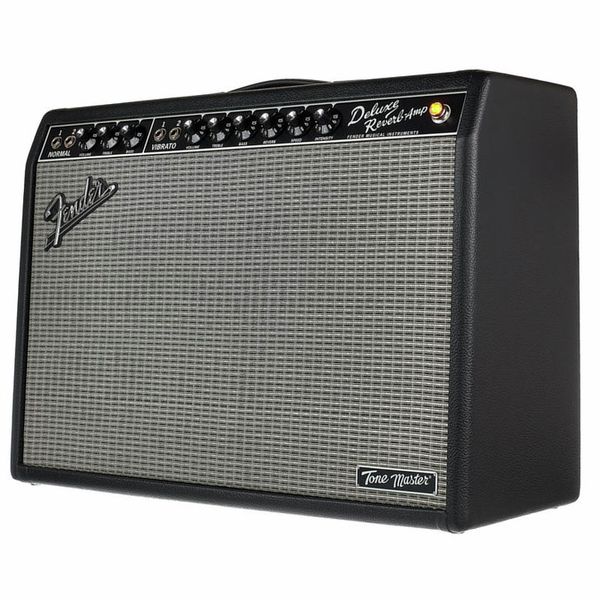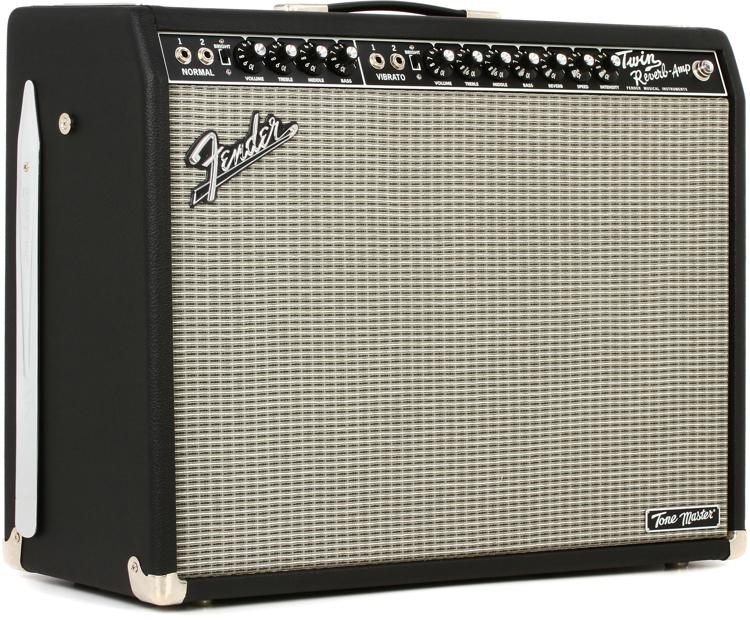I’ve had the amp for several days now and I’ve been playing it for over an hour day as I’ve been woodshedding for an upcoming gig. I just played my first gig with the band in six years, and I won’t lie: I’m still a little rusty. So all this practice has been a great excuse to play with the amp.
One of the things that got me really excited about the amp was the balanced line out. In fact, the one feature was a huge contributing factor in buying the amp. Having gigged for decades, I’ve been a big believer in having just enough volume to hear myself on stage and let the PA/sound folks get my sound out to the audience.
Amps are incredibly directional, especially single-speaker amps, so finding ways to spread out my sound has been very important to me. The typical sound reinforcement solution has always been to mic my amps. That works great, and I still use it when I’m gigging. But the Tone Master amps have a balanced line out AND they have two optional IRs to simulate different mic cabs! That means I can go directly into the PA and have my signal sound like what I’m hearing onstage. In theory…
The Katana also had this feature, and I loved it. But you needed a TRS cable and an XLR converter to plug into a mixing board. Not really that big of a deal, but it is more equipment, and I have forgotten to bring that cable to gigs in the past. But with the Tone Master Deluxe, Fender opted to just output via a regular XLR. That makes things much more convenient!
But the proof is in the pudding. So this morning, I decided to hook the amp up to my DAW to see if it’ll work for me. In short, oh yes, it will work. And the best thing about it is that the port is dead silent! Here are some clips:
IR Test
In this first test, I play a simple clean chord progression three times. The first time is raw with no IR activated. The second demonstrates the first IR which simulates an SM57. The third demonstrates the second IR which simulates a ribbon mic. Note that I recorded all these clips completely silent by activating the amp’s mute switch. Now THAT is amazing!
Raw
All these were played with my Godin Artisan ST V. Note that the slight line noise is coming from the guitar itself, not the amp.
Yup, that SM57 IR behaves exactly like what I’d expect from an SM57. It’s warm, but I personally have never liked it for guitar. The ribbon mic IR, on the other hand, is nice and open. That’ll be the one I use for gigs.
Cab 2 w/ Wampler Belle, Volume @ 5
Switching guitars to my Taylor T5z and playing in humbucker mode, I activated my Wampler Belle overdrive with its Gain set right in the middle to see how the line out worked with a pedal. Also, I turned the reverb down to about 2.
I did notice in the recording that I probably needed to up the treble a bit. But what I loved was that there was still enough note separation in the chords.
Cab 2, Volume @ 7, Reverb at 4 1/2
Finally, still playing my T5z, I learned my lesson from the previous clip, upped the treble a bit so the amp was set at 7 for Treble, and 3 for the Bass as the T5z tends to have a pretty fat bottom-end sound. What I wanted to test here was how the natural overdrive of the amp worked with lots of reverb.
Damn! After I listened to the playback, I was blown away by the sound! I love the sound coming from the amp itself, but to have it sound like that in a line out… “Wow!” is all I can say.
This amp is really ticking off all the boxes for me so far. I won’t do a full review on it until I’ve gigged with it a couple of times because by then I will have really put it through its paces. But I have band rehearsal today and as a test, I’m just going to bring the amp and my guitar and see how it works.




 Okay… so I’m in a band… again… And I’ve got GAS… again…
Okay… so I’m in a band… again… And I’ve got GAS… again…